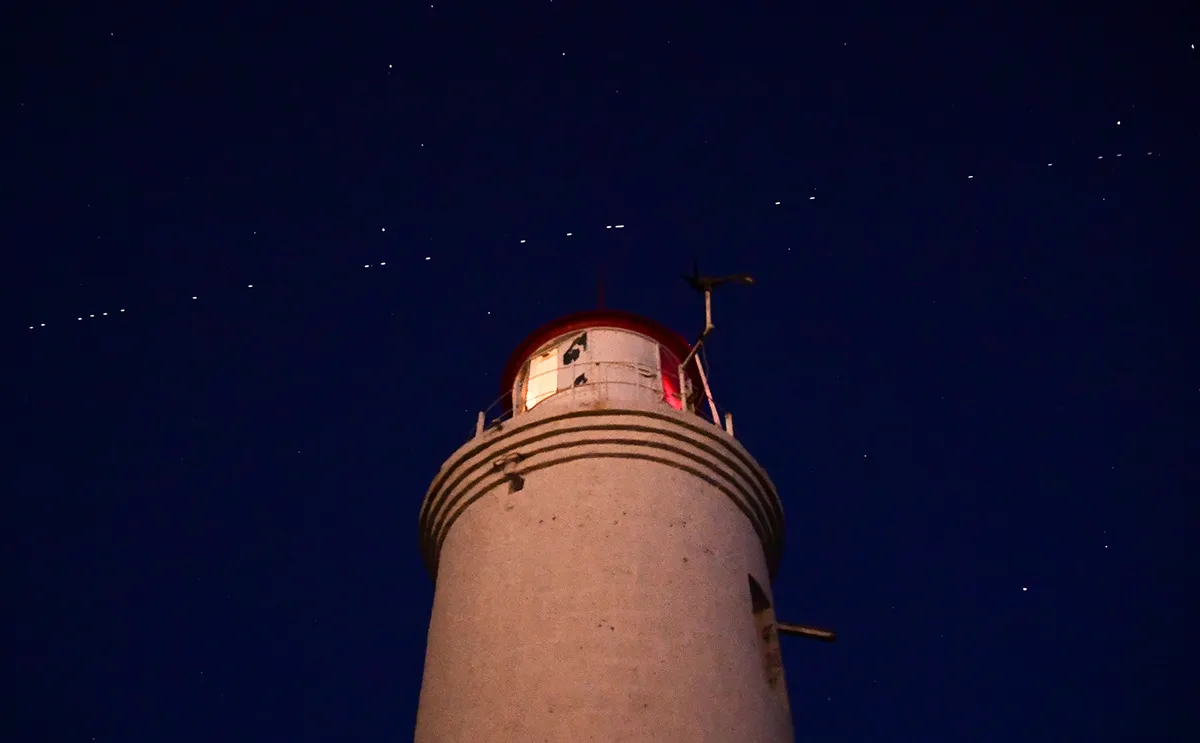Starlink is a constellation of satellites developed by Space Exploration Technologies Corp, aka SpaceX.
As of July this year, over 2,700 Starlink satellites have been launched, with the aim of ultimately providing global internet coverage via tens of thousands of satellites.
To put this into perspective, there are fewer than 5,000 active satellites currently orbiting Earth.
Starlink already provides the only viable access to the internet for many remote parts of the world.
While it is an admirable venture to connect the world to this marvellous network of human communication, it hasn’t come without criticism, including from astronomers.
The question is, how do Starlink satellites affect our view of the night sky?

Part of the problem is the Starlink satellites are positioned in low-Earth orbit, so appear particularly bright and move rapidly across the night sky.
With the sheer numbers shooting across the heavens, the concern is that they can severely disrupt ground-based astronomy, ruining an image or spectroscopic measurement as they streak through the telescope’s field of view.
SpaceX attempted to minimise this light pollution by coating one of the Starlink satellites with a dark material – creating ‘DarkSat’ – but this caused problems with controlling its temperature.
So in August 2020 SpaceX switched to launching ‘VisorSat’ Starlinks equipped with a sun visor to reduce the glare of sunlight reflected back to Earth.
How bright are Starlink satellites?

What’s been relatively uncertain until now, however, is exactly how bright the Starlink satellites appear in the night sky, and how accurately their positions are known, which is why Vishnu Reddy from the University of Arizona asked student Grace Halferty to investigate the problem as an undergraduate project.
The team imaged Starlink passes using a widefield lens with a field of view 15 times larger than the width of the full Moon, fitted to a 16-megapixel camera.
They collected over 350 observations of 61 Starlink satellites over a four-month period from February 2021, and calculated the brightness of each using the known magnitude of stars in the same frame.

They found that the average magnitude of the first generation of Starlink satellites was +5.1.
The magnitude of the DarkSat averaged +7.3 – almost eight times fainter than the earlier Starlinks – but the VisorSats only reduced the glare by 2.3 times to a magnitude of +6.0.
They concluded that this generation of VisorSats were so bright that they posed a significant hindrance to astronomers.

Can astronomers avoid Starlink satellites?
One strategy proposed to avoid the problems of Starlink trails is to temporarily close telescope shutters for 10 seconds while a Starlink satellite crosses the frame, but this relies on precise knowledge of when these occur.So the team also checked the accuracy of the predicted Starlink positions in their orbits.
They found an average time difference between the published and observed position along their orbit of 0.3 seconds, meaning that such observational pauses are likely to be effective.
This at least offers a workaround solution to the light pollution from the satellite mega-constellation.
But what stood out for me was how it was a great example of how undergraduate student projects can create useful scientific knowledge.
Lewis Dartnell was reading Photometric Characterization and Trajectory Accuracy of Starlink Satellites: Implications for Ground-Based Astronomical Surveys by Grace Halferty et al. Read it online at: arxiv.org/abs/2208.03226
